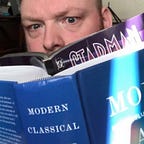Counting ‘sound particles’ with a quantum microphone
A device that eavesdrops on the quantum whispers of atoms and records particles of sound — phonons — could form the basis of a new type of quantum computer.
Physicists at Stanford University have developed a microphone so sensitive that it can measure the individual ‘particles of sound’ — phonons.
The device —described as a ‘quantum microphone’ — could lead the way to smaller, more efficient quantum computers which operate by manipulating sound instead of light.
Amir Safavi-Naeini, an assistant professor of applied physics at Stanford’s School of Humanities and Sciences, led the study — published in the journal Nature. He says: “We expect this device to allow new types of quantum sensors, transducers and storage devices for future quantum machines.”
A quantum of sound
It was Einstein who first proposed the existence of phonons — packets of vibrational energy emitted by perturbed atoms — in 1907. These indivisible packets of energy — quanta — work on the same principle as that which formed the foundation of quantum mechanics. This principle suggested that photons — particles of light — come in specific packets of energy also known as quanta.
